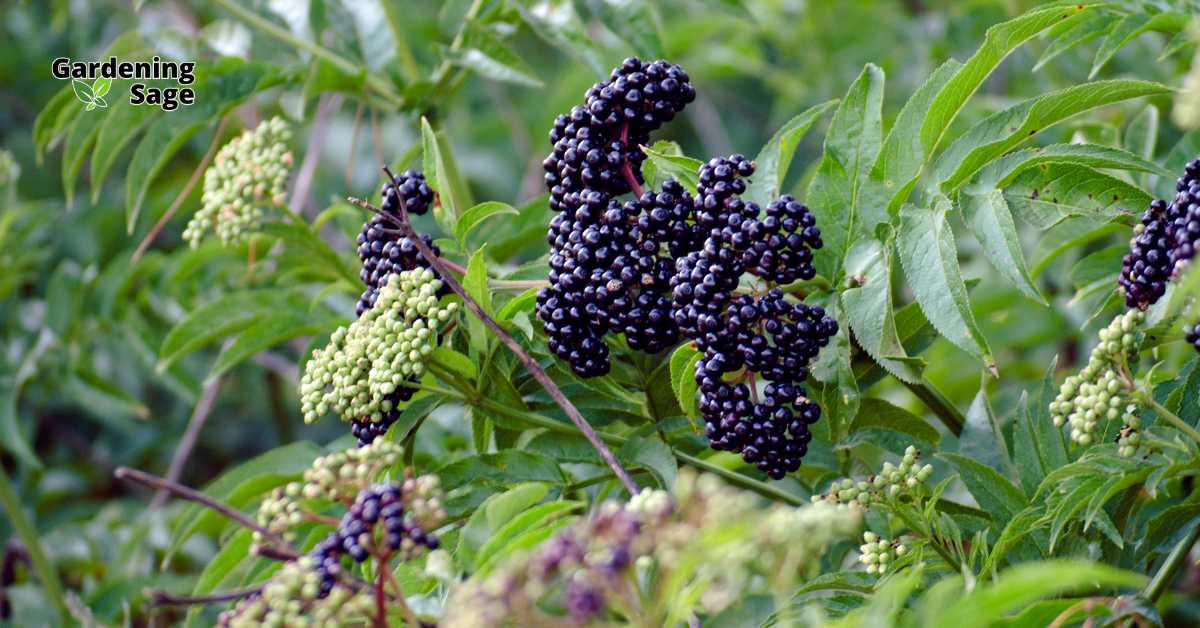The American elderberry (Sambucus canadensis) is a versatile and valuable addition to any garden. Known for its lush foliage, fragrant blossoms, and nutritious berries, it’s a favorite among gardeners and wildlife alike.
This guide will take you through the essentials of growing and caring for elderberries, ensuring a thriving and bountiful garden.
The Allure of Elderberries in Your Garden
Elderberries are not just admired for their ornamental beauty; they are a powerhouse of nutrients. Rich in vitamins and antioxidants, they are widely used in culinary and medicinal preparations.
Their large, creamy-white flowers and deep purple berries add a striking visual appeal to any garden setting. Beyond aesthetics, these plants offer ecological benefits, attracting pollinators and serving as a food source for wildlife.
Selecting the Right Elderberry Variety
While the American elderberry is widely cultivated, several varieties suit different climates and garden sizes. Varieties like ‘York’ and ‘Nova’ are known for their robust berry production and disease resistance.
When selecting a variety, consider factors like berry size, plant height, and hardiness for your specific region.
Planting and Site Selection
Elderberries thrive in well-drained, fertile soil with a slightly acidic to neutral pH. They prefer sunny locations but can tolerate partial shade.
When planting, ensure adequate space between plants – about 6 to 8 feet apart – to allow for air circulation and growth. Spring or early fall is the ideal time for planting, as this gives the plants enough time to establish their root systems.
Caring for Your Elderberry Bushes
- Watering and Mulching: Elderberries require consistent moisture, especially during dry periods. Mulching helps retain soil moisture and suppress weeds.
- Pruning and Maintenance: Pruning is crucial for elderberries. Remove dead or diseased branches and trim the bushes to encourage new growth and berry production. Annual pruning also helps maintain a desirable shape and size.
- Pest and Disease Management: Elderberries are relatively resistant to pests and diseases. However, keep an eye out for common issues like aphids and powdery mildew. Employ organic control methods like neem oil sprays or introduce beneficial insects for pest management.
Harvesting and Utilizing Elderberries
Elderberries are ready to harvest in late summer when the berries are fully ripe and deep purple. Harvest clusters of berries with care to avoid damaging the plant. These versatile berries can be used in making jams, syrups, pies, and even wine.
Remember, raw elderberries and other parts of the plant are inedible and must be cooked before consumption.
Elderberry Benefits and Uses
Elderberries are renowned for their health benefits. Rich in vitamin C and antioxidants, they are often used in immune-boosting supplements.
Beyond health, elderberries are an excellent choice for wildlife gardens, providing food for birds and beneficial insects.
American Elderberry Mastery
Growing American elderberries can be a rewarding experience. With the right care and conditions, these plants can be a beautiful and beneficial addition to your garden.
Whether you’re interested in their nutritional value, ornamental beauty, or ecological benefits, elderberries offer something for every gardener.
Embrace these tips and enjoy the journey of nurturing these wonderful plants in your garden.














